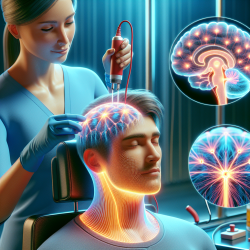Empowering Minds: The Transformative Power of Outdoor Play and Physical Activity
In the realm of speech-language pathology and therapy, the holistic development of children is a priority. Recent research, "Physical activity mediates the relationship between outdoor time and mental health," offers compelling insights into how outdoor activities and physical exertion can positively impact mental health among adolescents. This blog aims to distill these findings into actionable strategies for practitioners, ensuring that data-driven decisions are at the forefront of therapeutic interventions.
The Research Insight
Conducted by Bélanger et al., the study analyzed 242 adolescents in New Brunswick, Canada, to explore the relationship between outdoor time, physical activity, and mental health. The findings suggest that physical activity acts as a mediator between outdoor time and positive mental health outcomes. Specifically, moderate-to-vigorous physical activity (MVPA) was found to enhance the probability of flourishing mental health, even when outdoor time did not directly influence mental health outcomes.
Implementing Research Outcomes in Practice
For practitioners in speech-language pathology and related fields, integrating these findings into therapy sessions can be transformative. Here are some strategies to consider:
- Incorporate Outdoor Activities: Encourage children to spend more time outdoors. Activities such as nature walks, outdoor games, or simply playing in a park can provide the setting for increased physical activity.
- Promote Physical Activity: Design therapy sessions that include physical activities. This could involve exercises that are both fun and beneficial, such as obstacle courses or team sports.
- Educate and Engage Parents: Inform parents about the benefits of outdoor play and physical activity. Provide them with resources and ideas to facilitate active outdoor time for their children.
Encouraging Further Research
While this study provides valuable insights, it also opens avenues for further exploration. Practitioners are encouraged to delve deeper into the nuances of how different types of outdoor environments and physical activities specifically contribute to mental health improvements. Consider collaborating with researchers to explore these dynamics further, ensuring that therapy practices are continuously refined and evidence-based.
Conclusion
As practitioners dedicated to fostering positive outcomes for children, embracing the interplay between outdoor time, physical activity, and mental health can lead to more effective therapy strategies. By leveraging these insights, we can enhance the well-being of the children we serve, ensuring they thrive both mentally and physically.
To read the original research paper, please follow this link: Physical activity mediates the relationship between outdoor time and mental health.










